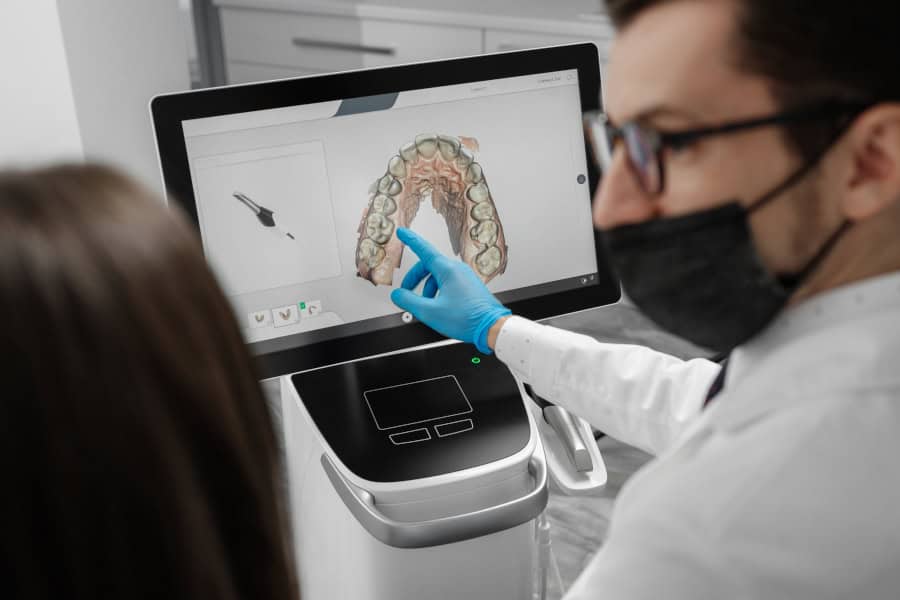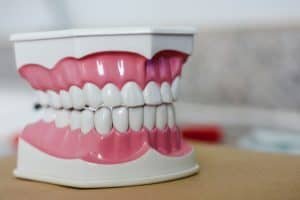Denture Options: Traditional vs Digital
Which Is Best For You?
Dentures have long helped people reclaim their smiles and enjoy simple pleasures like eating and speaking with ease. When it’s time to replace missing teeth, traditional dentures are often the classic solution that comes to mind. But with advancements in dental technology, digital dentures now offer another path toward comfort and confidence. SureFit would like to walk you through these two options, so you can feel informed about the choices available to you and find the right fit for your needs.
Understanding Traditional Dentures
Traditional dentures have been around for years, providing a familiar and hands-on approach to restoring missing teeth with a natural look and feel. SureFit often finds that traditional dentures are an ideal choice for patients who value the skilled craftsmanship and time-tested process involved. You can choose from two types of traditional dentures: partial dentures, which fill in gaps around your existing teeth, and full dentures, which replace an entire set.
The process of making traditional dentures involves several thoughtful steps to ensure a natural, comfortable fit:
- Taking Physical Impressions
Your journey begins with a physical impression of your mouth. Your denturist uses a soft putty material to create an exact model of your gums and any remaining teeth. This impression is essential to crafting a denture that feels secure and comfortable. - Creating Molds and Wax Models
Once the impressions are ready, they’re used to form a mold, guiding the fit and base of your dentures. At this stage, your denturist also creates wax models, which allow you to preview the fit and look. You and your denturist can then make any adjustments needed before moving forward, so the final result meets your expectations. - Finalizing the Dentures
The last stage is all about bringing your dentures to life. Using carefully chosen materials like acrylic resin or porcelain for the teeth, and an acrylic base that resembles natural gums, each denture is crafted to look and feel as close to natural teeth as possible. This is where the artistry of traditional dentures shines, blending both form and function to help you feel like yourself.
Materials such as acrylic resin and porcelain are popular choices because they mimic the color and feel of natural teeth. Many patients choose traditional dentures because of the detail and care involved in the process, making it a solid option for those who value craftsmanship. If you’re curious about how digital dentures offer a different experience, let’s take a look at what they bring to the table.
Digital Dentures: Precision Craftsmanship for a Modern Smile
Digital dentures offer a new way to restore missing teeth, using advanced technology to create a precise and comfortable fit. We find that many patients appreciate digital dentures because, compared to traditional options, they streamline the process and provide a level of customization that feels comfortable and secure.
Creating digital dentures involves three unique steps:
- Capturing Digital Impressions with an Intraoral Scanner
Rather than the putty used for traditional impressions, digital dentures begin with an intraoral scanner—a small, handheld device that creates a highly detailed 3D image of your mouth. This scan captures the exact shape of your gums and any remaining teeth, ensuring the dentures fit securely and feel natural. Many patients find this digital scan process quicker and less invasive, making it an appealing option for those who prefer a gentler experience. - Designing with Specialized Denture Software
With the digital impressions ready, the next step is to design the dentures using denture-specific software such as 3Shape’s Dental System or Exocad. These programs, widely used among denturists, allow us to make precise adjustments to fit your bite alignment, tooth size and shape, and the overall contour of the dentures. This level of customization ensures that your dentures will look natural, function well, and feel comfortable in place. - Producing the Dentures Through Digital Manufacturing
After the design is finalized, the dentures are produced using advanced manufacturing methods like 3D printing or milling. High-strength polymers, such as poly(methyl methacrylate) (PMMA) and durable resins, are commonly used for digital dentures. These materials are chosen for their resilience and the precise fit they allow, offering a different feel from traditional acrylic and porcelain options while providing added strength for daily use.
Digital dentures bring a streamlined process with a comfortable fit that suits many people’s preferences. Now, let’s examine how digital and traditional dentures compare in key areas such as comfort, durability, and customization.
Comparative Analysis: Finding the Right Fit for Your Lifestyle
Choosing the right dentures is about more than just function—it’s about finding an option that feels like a natural part of you. Each type of denture has qualities that can impact your comfort, appearance, and daily ease. Here’s how traditional and digital dentures compare in areas that matter most to our patients.
Fit and Comfort
- Traditional Dentures
- Traditional dentures are designed to provide a comfortable, steady fit that feels natural. With a hands-on fitting process, they’re crafted to fit securely, though some patients may need occasional adjustments over time to maintain that close feel as their gums change.
- Digital Dentures
- Digital dentures are made from highly detailed digital scans that map the unique shape of your gums and mouth. This creates a close-fitting denture that many patients find comfortable from the start. Some may still experience a short adjustment period, but overall, digital dentures are known for a reliable, snug fit.
Time and Appointments Needed
- Traditional Dentures
- Creating traditional dentures often requires four to five appointments spread over several weeks. Each visit allows for hands-on adjustments, so the fit and look align with your needs. Typically, the process takes around four to six weeks from start to finish.
- Digital Dentures
- With digital dentures, the process is typically quicker, often requiring only two to three appointments. Digital scanning and production technology allow most patients to receive their dentures within two to three weeks. However, because they require specialized equipment, digital dentures may not be available at all clinics.
Durability and Materials
- Traditional Dentures
- Traditional dentures are made from materials like acrylic resin for the base and porcelain for the teeth. These materials are strong and dependable, typically lasting about five to seven years with regular care. However, daily use and natural changes in your gums can lead to wear and may require occasional maintenance.
- Digital Dentures
- Digital dentures are crafted from high-strength polymers, such as PMMA, chosen for their durability and resilience. Studies suggest these materials may last closer to seven to ten years, offering a robust option for those looking for a long-lasting choice. While the materials are newer to the field, their strength and initial performance are promising for extended wear.
Cost Considerations
- Traditional Dentures
- With an average cost ranging from $1,000 to $2,500 per arch, traditional dentures generally involve a lower initial cost. However, due to the need for periodic adjustments or repairs, additional expenses over time are common.
- Digital Dentures
- Digital dentures involve a higher upfront cost, often between $2,000 and $5,000 per arch. Many patients find that the custom fit and lower maintenance needs make digital dentures a good investment over time, potentially reducing ongoing costs.
Personalization and Natural Look
- Traditional Dentures
- Crafted by hand, traditional dentures offer a personal touch, with a denturist adjusting the color, shape, and fit to suit your natural features. The outcome can vary depending on the denturist’s expertise, but for many, this hands-on process provides a unique, personalized look that fits their smile naturally.
- Digital Dentures
- With digital dentures, specialized design software captures the precise details of your smile, including tooth size, shape, and color. This approach delivers consistent, realistic results that many patients appreciate. While some very fine adjustments may be limited by the software, digital dentures typically provide a balanced, lifelike appearance.
Traditional and digital dentures each bring something different to the experience, whether it’s the hands-on familiarity of traditional methods or the modern comfort of digital options. Making a choice comes down to what best fits your lifestyle, needs, and budget. Whatever you decide, the goal is to help you feel confident and natural in your smile again.
If you still have questions, take a look at some answers to common concerns. It’s normal to have a few questions, and we’re here to make things clear and comfortable for you.
Frequently Asked Questions
We know that choosing dentures brings up a lot of questions, and it’s natural to want clear answers before making a decision. Here are some of the most common questions patients ask:
- “How can I tell if digital dentures are available at my local clinic?”
- Not every clinic offers digital dentures, as they require specific equipment. If you’re interested, call ahead to see if your clinic offers them. If not, they might be able to recommend a nearby clinic with digital options, especially if a quick turnaround or added customization is important to you.
- “Are digital dentures a good option for everyone?”
- Digital dentures are a great choice for many, particularly if you’re looking for a comfortable, close fit. However, some people with more complex dental needs or unique jaw structures may find traditional dentures more adaptable to their situation. A consultation with your denturist will help you decide which type best meets your personal needs.
- “Does insurance typically cover digital dentures?”
- Coverage varies, so it’s helpful to review your plan or reach out to your provider. Traditional dentures are often fully or partially covered by most insurance plans, but digital dentures may have different coverage. Some patients find that digital dentures, with costs typically ranging between $2,000 and $5,000 per arch, are partially covered. Your denturist’s office can assist with questions and may even help with pre-approval paperwork.
- “What are the maintenance differences between digital and traditional dentures?”
- Both types need regular cleaning and occasional checkups, but digital dentures are often less likely to need adjustments due to their detailed, personalized fit. Traditional dentures may require more frequent adjustments to maintain comfort over time. Overall, caring for digital dentures can feel a bit simpler in terms of long-term maintenance.
- “Are digital dentures long-lasting?”
- The high-strength polymers used in digital dentures are designed to hold up well over time. While traditional dentures typically last five to seven years with regular care, digital dentures, made with materials like PMMA, often last seven to ten years based on current studies. These materials are newer to the denture field, but the results so far suggest they’re well-suited for daily wear.
Checklist for Consultation Preparation
Preparing for your consultation can help you feel more informed and ready to discuss what’s best for you. Here’s a quick checklist to consider:
- Think about timing: Do you need your dentures as soon as possible? Traditional dentures generally take about four to six weeks to complete, while digital dentures can often be ready in two to three weeks.
- Review your budget: Traditional dentures typically cost $1,000 to $2,500 per arch, while digital dentures range from $2,000 to $5,000 per arch. Make sure to consider what you’re comfortable investing, and don’t hesitate to ask your denturist’s office about payment options.
- Consider your fit preferences: If a secure, long-lasting fit without frequent adjustments is a priority, digital dentures might be more appealing. However, if you’re open to a few adjustments along the way, traditional dentures offer an excellent fit and feel as well.
- Check your insurance coverage: Some insurance plans cover traditional dentures more fully than digital ones. Ask your provider for specifics or bring your coverage information to your consultation for a more tailored recommendation.
- Think about the look you want: If achieving a natural, realistic appearance is important to you, mention this to your denturist. Both types offer a great look, but digital dentures provide highly consistent, natural results based on digital design.
Making the Right Choice for Your Smile
Both traditional and digital dentures bring different qualities to the table, whether it’s the trusted familiarity of traditional methods or the comfortable, modern fit of digital options. Choosing what feels right comes down to your lifestyle, needs, and personal comfort.
We know that every patient’s smile has its own unique needs, and what feels natural to you is our priority here at SureFit. If you’re curious to learn more or want to talk through what might work best for you, we’re here to listen and offer guidance. Feel free to reach out with questions or to set up a time to chat—we’re here to help you find the fit that lets you enjoy your smile every day.
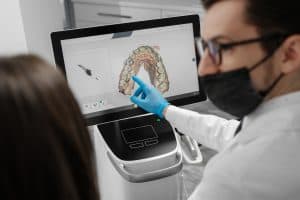
Finding the Right Dentures for You: Traditional vs. Digital Options
Looking for dentures that feel natural and fit your life? We’re here to walk you through traditional and digital options, so you can find the best choice for your smile.
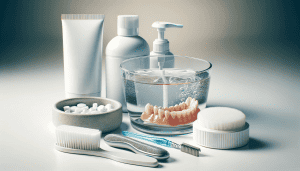
Essential Denture Maintenance: Cleaning Routines, Products, and Common Mistakes
Take proper care of your denture. We’re here to help you learn everything you need to know about taking proper maintenance of your dentures.
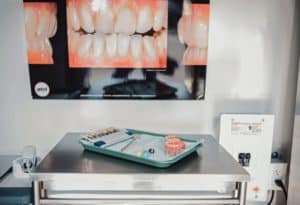
A Beginner’s Guide to Dentures: All You Should Know
It isn’t too late to learn about dentures and the different conditions that they entail because we’ve got you covered with this comprehensive guide on all you need to know.

The Truth About Denture Pain & Discomfort: What to Know
In the case that you were recommended to get dentures, you might have some apprehension about it because of the thoughts of pain and discomfort it could bring. However, don’t look at it as a bad thing. Some pain and discomfort that comes with dentures are normal and would usually go away on their own, especially when you’re still adjusting to them.

